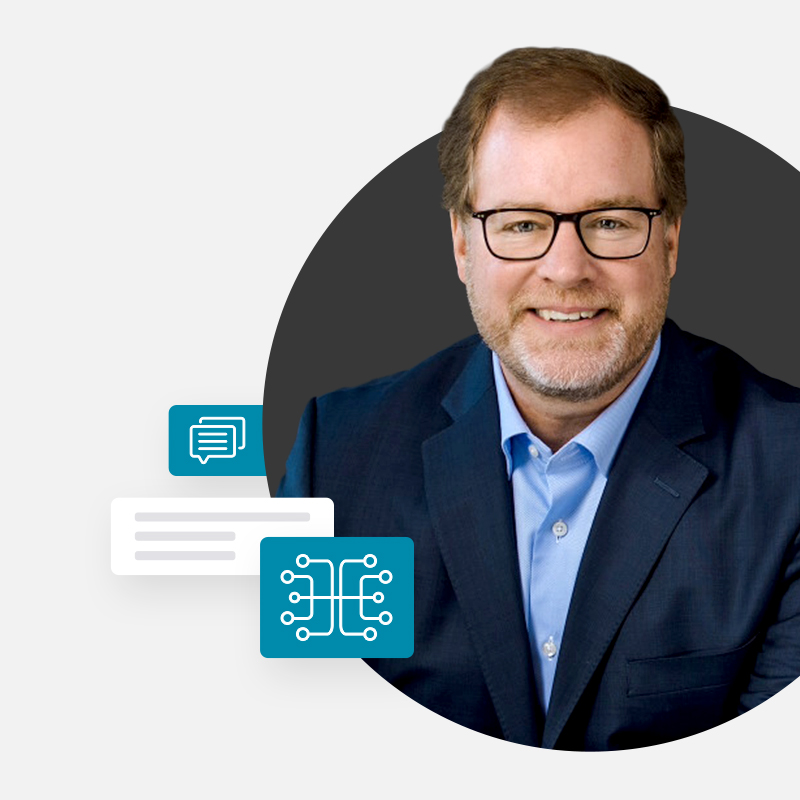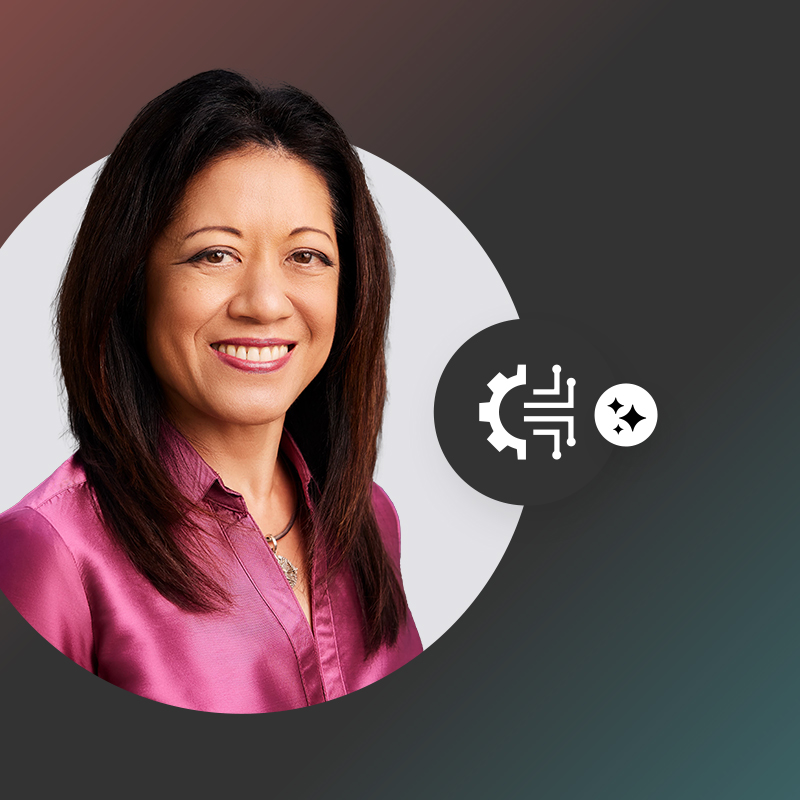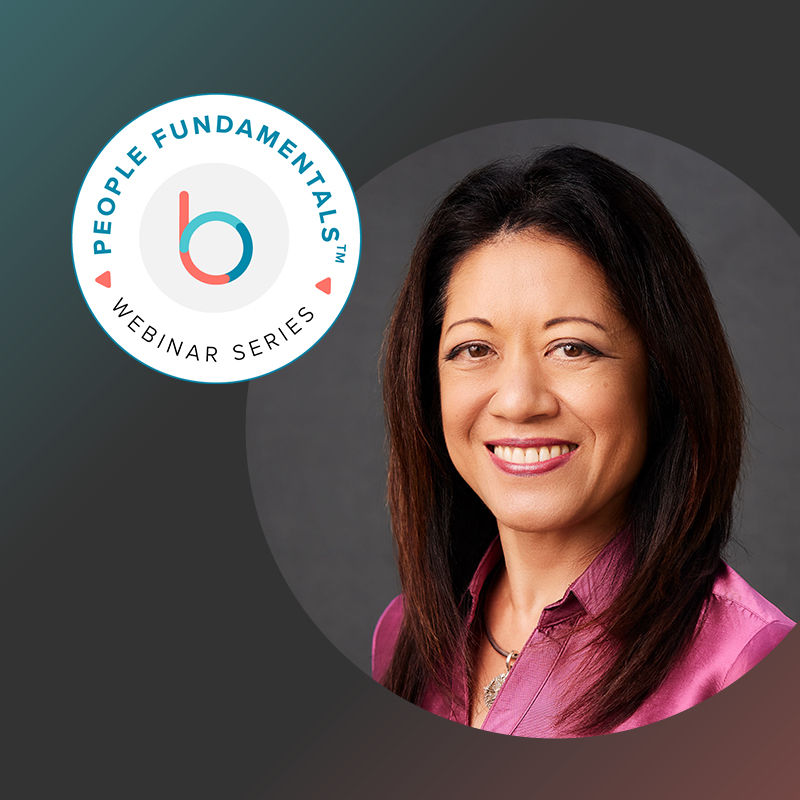As CEO of the Institute for Corporate Productivity (i4cp), Kevin Oakes has a unique perspective on workplace performance and productivity trends. Atop that list is generative artificial intelligence, or GenAI, which has the potential to revolutionize work as we know it.
That’s why Oakes and the i4cp team have been researching how HR teams are adopting GenAI and what “next practices” look like. “We define next practices as practices where we see a strong correlation to performance, but not a lot of companies have yet put that practice into place,” Oakes says.
Discover what Kevin Oakes and i4cp’s research reveals about GenAI in HR and how you can help your organization safely and securely innovate with AI.
HR leaders’ key role in establishing GenAI norms
Many employees are already using AI to supplement their work, whether their employer has sanctioned its use or not, Oakes says. To get ahead of potential risks, be upfront and intentional about how employees ought to use GenAI at work to preserve safety and security.
The risks are real. Recently, employees at Samsung Electronics leaked sensitive internal source code by uploading it to ChatGPT — prompting the tech company to ban the use of ChatGPT and similar platforms. However, in many cases, companies should offer education and clear guidelines rather than ban these tools.
“I think a lot of employees don’t realize they’re doing this,” Oakes says. “Maybe they don’t care, but you’ve got to make them care and make them understand the ramifications.”
How you frame GenAI for the workforce determines how people use it. “It starts with communication,” Oakes says. “What are leaders saying to the organization about AI? And how are they describing how effective it’s going to be in the future for that organization?”
If you present GenAI as a threat, some employees will simply hide their usage, which introduces additional risks. But if you talk about GenAI as an opportunity and create space for safe experimentation, you can increase transparency and spur innovation.
The bottom line is that HR needs to be more involved in AI strategy and governance. “Because HR is the closest function to the workforce, you have to involve HR in these discussions long-term,” Oakes says. “Equally, HR has to be ready for those discussions and provide strategic advice to the organization.”
“How you frame GenAI for the workforce determines how people use it. “It starts with communication. What are leaders saying to the organization about AI? And how are they describing how effective it’s going to be in the future for that organization?”
kevin oakes, ceo, i4cp
HR lags behind other functions in adopting GenAI
When you think of business functions that are on the cutting edge of GenAI, HR’s not necessarily among them. “That doesn’t mean that it’s a real cause for concern,” Oakes says. “I think a lot of functions are behind when they look at their uses of GenAI.”
To begin closing the gap, he recommends that HR leaders explore potential use cases and experiment with the technology. Build on your initial findings by developing a plan for implementing AI in HR, including specific problems to solve. You’ll want a clear objective, along with metrics to determine success.
According to i4cp’s recent research, key areas where HR leaders are applying GenAI include learning and development, people analytics, talent acquisition, and HR call centers, where AI enables greater speed and efficiency. The top two uses for GenAI within HR are creating learning content and researching information. There is also some use of GenAI for employee engagement and leadership development.
The most important activity HR can engage in now to get up to speed with GenAI, Oakes says, is to invest in upskilling and reskilling their team and to hire for AI skills. HR leaders can generate greater efficiencies by helping team members deconstruct their roles into tasks to better understand the mundane tasks that GenAI can handle.
Early GenAI adopters will blaze a path to the future
While GenAI poses some risks, such as possible introduction of bias and data leakage, Oakes says, it also has many potential benefits that HR leaders can’t afford to miss. Enterprise organizations that have already adopted GenAI are what Oakes calls “AI innovators.” These organizations “are thoughtfully and fully embracing AI, and leaders are supporting its uses — but they put parameters on how they’re using it,” Oakes adds.
While the majority of companies are in “cautious exploration mode,” Oakes says the market will split with AI innovators being the ones who outpace their competitors. “If you think back to when the Internet first blossomed, companies that thoughtfully embraced how they were going to use it to their advantage were the ones that ultimately outpaced their competition,” he says. “The same thing is going to happen with AI.”
Oakes points out that while most of the current uses of GenAI focus on creating efficiencies, the longer-term plays will be around generating greater effectiveness. GenAI will be able to handle complex tasks, such as those related to developing strategies, by detecting patterns and finding synergies across the organization.
“If you think back to when the Internet first blossomed, companies that thoughtfully embraced how they were going to use it to their advantage were the ones that ultimately outpaced their competition. The same thing is going to happen with AI.”
kevin oakes, ceo, i4cp
By observing AI innovators, other companies can learn to balance the risks and rewards of GenAI. “High-performing organizations are absolutely beginning to leverage AI in a number of different areas — but they’re doing so very thoughtfully and very proactively,” Oakes says. “They’re not sitting back and being reactive to what’s happening out in the world.”
Many larger companies are applying GenAI to day-to-day work. Walmart’s “My Assistant” tool, for example, will help 50,000 corporate employees streamline tasks, improve onboarding, and more. This is a great example of HR’s role in AI innovation, Oakes says, as “their CHRO is partnered with the individual who’s leading AI efforts in Walmart around this.”
When HR leaders work with their peers in leadership, they can use GenAI to drive innovation and produce positive business outcomes.
Oakes and his team will be presenting their research at the October 2023 HR Tech conference during a pre-conference workshop and a mega-session.
Want to learn more? Discover what the future holds for AI and HR, according to HR leaders.
3 ways AI will tranform work


